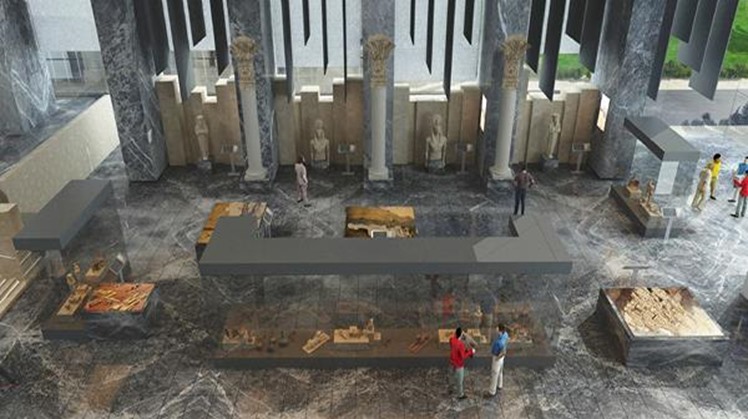The New Administrative Capital is not only a group of buildings that include state institutions, but was specifically designed to become a source of cultural and enlightenment radiation and the application of developmental thought throughout the Arab Republic of Egypt. Intellectual, cultural, religious and social growth. This center is considered one of the important cultural centers in Egypt and Africa as well.
Among what the administrative capital includes is the museum. Just as the ancient Egyptians built our great civilization, the people of this country, with conscious political leadership, complete the history of our ancient ancestors. That is the existence of future generations that build and advance their society because they grew up on an area greater than the agony of the soul.
The Administrative Capital Museum
The Administrative Capital Museum is the Museum of the Capitals of Egypt, and it tells the history of Egyptian capitals through the different ages, as it consists of a main hall in which the antiquities of a number of capitals of ancient and modern Egypt are displayed, numbering 7 capitals, which are "Memphis, Thebes, Tell el-Amarna, Alexandria, Islamic Cairo, and Khedive Cairo This is in addition to displaying a group of different holdings that represent lifestyles in each historical era, specific to each capital separately, such as ornamental tools, tools of war and fighting, the system of government and various correspondences.
As for the second section of the museum, it is a pavilion that represents the other world of the ancient Egyptian, and this part consists of the tomb of Toto, which was discovered in 2018 in Sohag Governorate, in addition to a hall for mummies and coffins and two curtains containing canopic pots and a set of imaginary doors and alternative heads that simulate religious rituals in Ancient Egypt.
Within the scenario of the show, we also find the mummies of priests and priestesses of the idol Amun, as the museum received the mummy of Nessi Khonsu, the second wife of the high priest of Amun, Banjem II, which is considered a distinguished model for the development of the embalming method in the 21st family, as the coveted eyes with stones and the dark yellow color of the skin gave a sense of vitality and freshness. A group of petal stones depicting King Akhenaten and his wife, Queen Nefertini, from the storage of the Luxor Museum, a Cuban chariot, a calash, and a model of a chariot that was gifted to King Farouk. We also find a number of canopic pots and a wooden box inscribed with a picture of the idol Anubis, and a wonderful double statue of King Merneptah and the gods Hathor from the region Effects of a dead hostage.
Also among the museum’s holdings are two carpets, one of which is made of wool with an inscription in Persian that reads: “Safazara Kashan” and has a red and beige bowl in the middle. As for the second carpet, it has floral and geometric motifs in navy and orange colors, bordered on the sides by two stripes, and the square of the carpet has a toothed bowl in the middle, from which shapes emerge. Botanical and engineering. In addition to ceramic pieces that simulate the patterns of daily life, including decorations and motifs of the ancient Egyptian, and a bronze bust of Khedive Ismail, which enriches the part devoted to presenting Islamic and Khedive Cairo and daily life in these eras.
 Sun, Mar. 26, 2023
Sun, Mar. 26, 2023